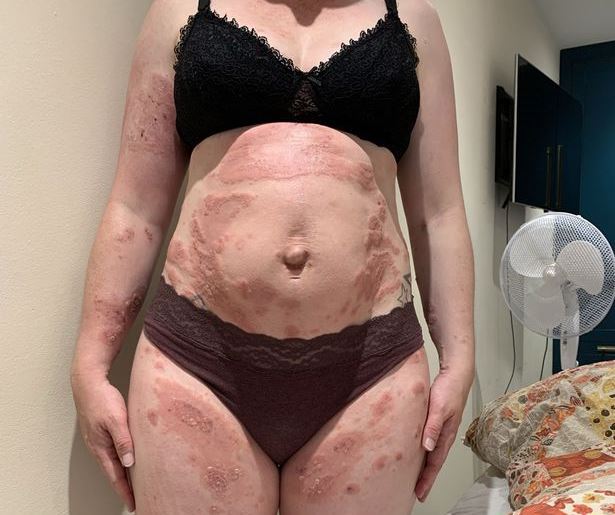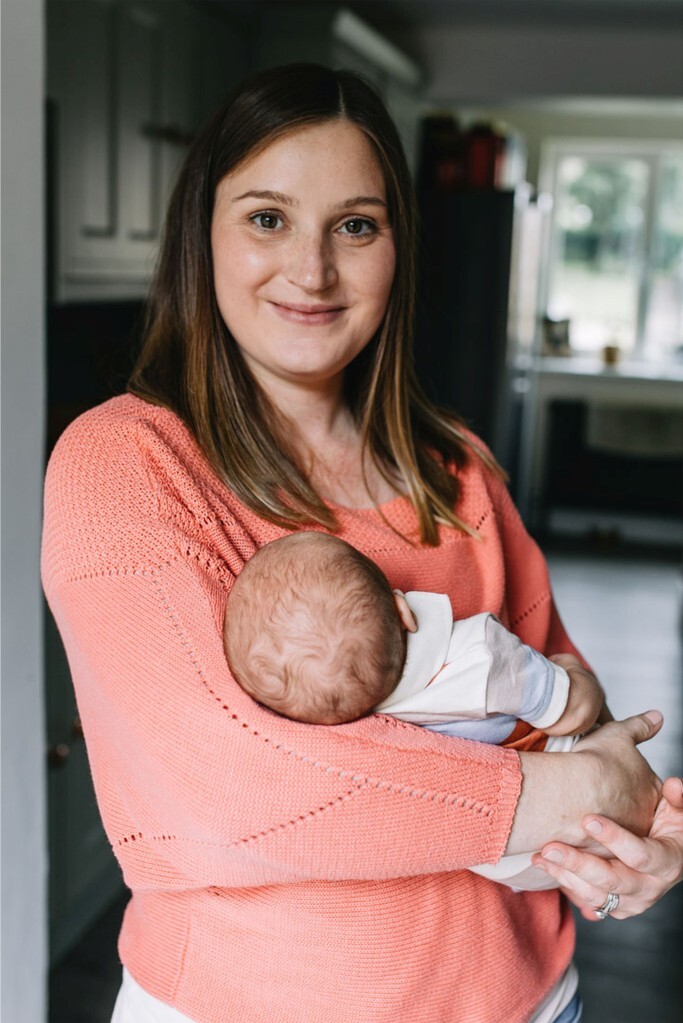Condition was diagnosed after the child was born; understand the picture
Fiona Hooker, who gave birth about 7 months ago, had a rare condition during her pregnancy . She developed reddish patches all over her body, as if it were an allergy to her own child.
The condition appeared with spots on the belly from the 31st week of pregnancy. According to her, they looked like “nettle bites”, which itched and got progressively worse.
Doctors prescribed a series of steroid creams, but they did not resolve the severity of the symptoms.

At eight months into the pregnancy, the rashes became more severe and Hooker had to go to the ER. She started another round of oral steroids, which made the pain subside.
But the 32-year-old said the condition “exploded” into painful blisters after she gave birth, making it difficult to even hold her baby.
Doctors were initially confused by Hooker’s condition, especially since, with her first pregnancy, she had no complications.

Only after giving birth, she was diagnosed with pemphigoid gestationis – an autoimmune disorder “caused by the immune system, which produces autoantibodies that mistakenly attack the skin itself.
“They think it might have to do with the baby — something in the father’s DNA causes the placenta to start attacking a protein that’s also in the skin, so my body was attacking my skin,” she said.
“My son must have a gene from his father that my daughter didn’t get because I didn’t have it in my first pregnancy,” she said.
Hooker then underwent a six-month long course of treatment with varying levels of oral steroids until the condition improved.
pemphigoid gestational
Pemphigoid gestationis is a condition that presents as a bullous eruption and can occur during pregnancy or postpartum. Diagnosis is clinical or by skin biopsy.
According to the MSD Manual, the disease appears to be an autoimmune phenomenon, probably caused by IgG antibodies.
Lesions typically start in the belly button area and then spread throughout the body. The palms of the hands, soles of the feet, trunk, gluteal region and extremities may be affected, but normally the face and mucous membranes remain unharmed.
Treatment for pemphigoid gestationis is done with corticosteroids, as in Hooker’s case.